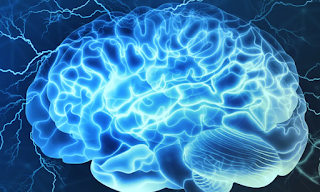Connor, P., Weeks, M., et al. (2023).
Journal of Personality and Social Psychology,
124(1), 22–48.
https://doi.org/10.1037/pspa0000314
Abstract
Little is known about implicit evaluations of complex, multiply categorizable social targets. Across five studies (N = 5,204), we investigated implicit evaluations of targets varying in race, gender, social class, and age. Overall, the largest and most consistent evaluative bias was pro-women/anti-men bias, followed by smaller but nonetheless consistent pro-upper-class/anti-lower-class biases. By contrast, we observed less consistent effects of targets’ race, no effects of targets’ age, and no consistent interactions between target-level categories. An integrative data analysis highlighted a number of moderating factors, but a stable pro-women/anti-men and pro-upper-class/anti-lower-class bias across demographic groups. Overall, these results suggest that implicit biases compound across multiple categories asymmetrically, with a dominant category (here, gender) largely driving evaluations, and ancillary categories (here, social class and race) exerting relatively smaller additional effects. We discuss potential implications of this work for understanding how implicit biases operate in real-world social settings.
General Discussion
Implicit bias is central to the study of social cognition. Given that people are multiply categorizable, understanding the influences of such intersectionality upon implicit bias is likely to be vital for understanding its effects in everyday social contexts. In the present research, we examined implicit evaluations of multiply categorizable social targets, testing two competing theories about intersectional intergroup bias. We also developed and tested the reliability of a novel method of measuring and modelling implicit bias at the level of individual targets.
In Study 1 we observed implicit evaluations of Black and White males to be driven solely by targets' social class with bias favoring upper-class over lower-class targets. In Study 2, we measured implicit evaluations of targets varying in race, gender, social class, and age, and found results to be primarily driven by a specific positive bias favoring upper-class female targets. In Study 3, we used similarly intersectional targets, and explored the impact of portraying targets in full-body versus upper body photographs on implicit evaluations. Here, we observed effects of targets’ race, with Asian and White targets evaluated more positively than Black targets, and of targets’ social class, with upper-class targets evaluated more positively than lower-class targets (though only when targets were displayed in full-body presentation). Most striking, however, was the dominant effect of target gender, with positive/negative evaluations of female/male targets accounting for the majority of variance in implicit bias.
In Study 4 we tested the generalizability of these results by recruiting representative samples of US adults, and measuring implicit evaluations not just via ST-IATs, but also via EPTs and AMPs. Across all measures, we observed target gender to be the largest driver of implicit evaluations, though its dominance was less pronounced in EPTs and AMPs than in ST-IATs. We also again observed effects of targets’ social class and race, though the effect of race was inconsistent across tasks, with participants displaying anti-Black bias in the ST-IAT, pro-Asian bias in the EPT, and anti-White bias in the AMP. Finally, in Study 5 we conducted an integrative data analysis to test a number of potential moderating factors. Results showed that while all groups of participants displayed pro-female implicit gender bias and pro-upper-class implicit social class bias, both biases were stronger among women than men. Results also showed the effect of race varied across racial groups, with Asians displaying a preference for Asian over White and Black targets, Black participants displaying a preference for Asian and Black targets over White targets, Latinos displaying a preference for Asian over Black targets, and Whites displaying no significant racial bias.



















